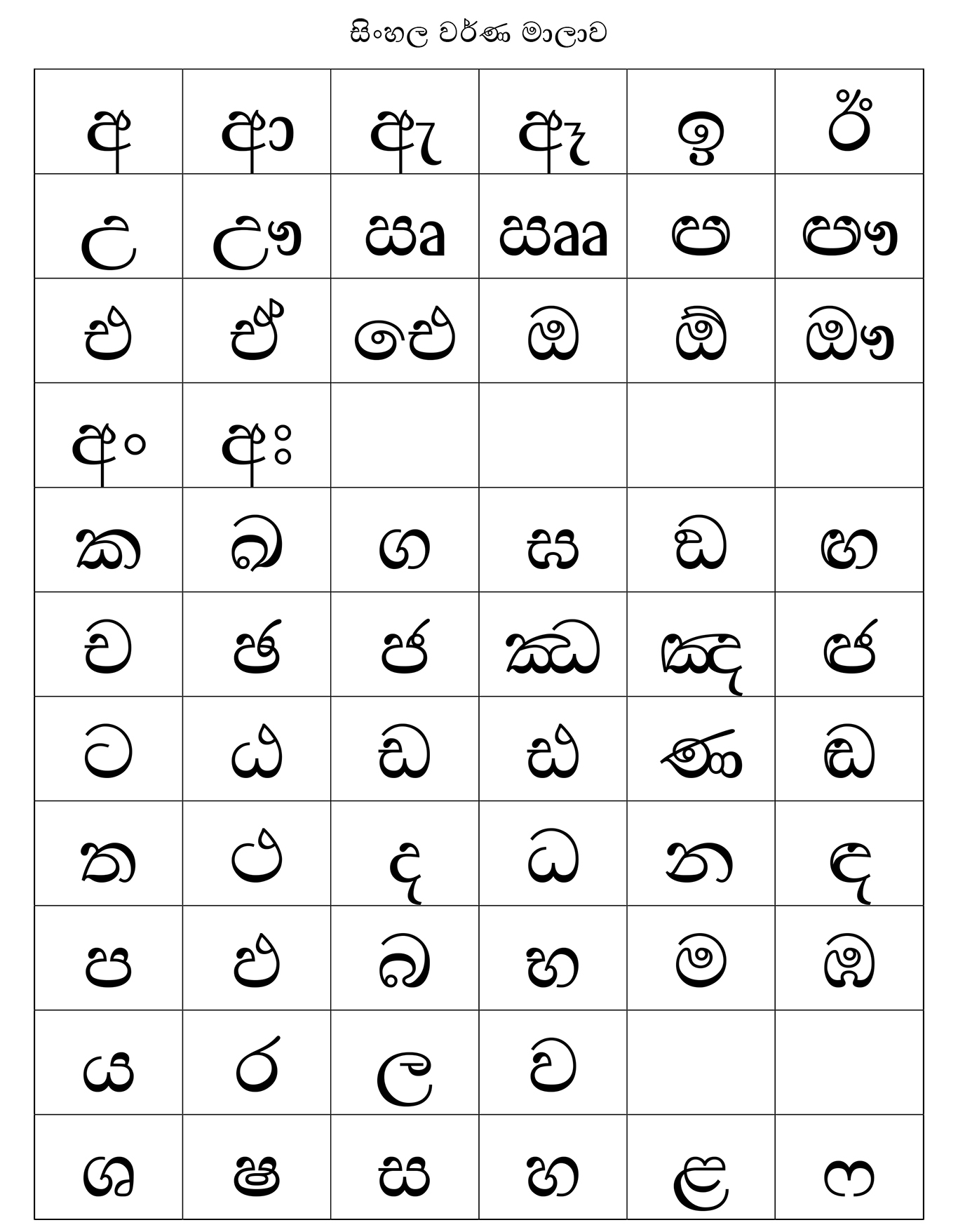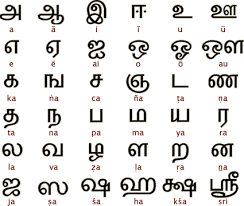Sinhala and Tamil Languages
Language is the media of man’s thinking. It’s necessary to handle the language properly for clear expression.
Sinhala (Siṃhala) is a derivation from siṃha, the Sanskrit word for " lion-blood " is an Indo-Aryan language primarily spoken by the Sinhalese people of Sri Lanka, who make up the largest ethnic group on the island, This refers to Prince Vijaya, the founder of the Sinhala people. According to the legends, Prince Vijaya descended from the King Sinhabahu, who was the son of a princess and a lion
Historians discovered language similar to Sinhala in rock carvings date back to 200 BC. This language changed and developed over time. By 1250, a literary Sinhala language formed that has remained intact. Pronunciations have changed, but Sinhalese today is comparable to the 1250 version. Sinhala is one of the official and national languages of Sri Lanka. 74% of the population use it. The other main language used in Sri Lanka is Tamil. Sinhala has features that set it apart from other Indo-Aryan languages. Sinhala has many words that are only found in Sinhala, As a result of centuries of colonial rule, interaction, settlement, intermarriage, and assimilation, modern Sinhala contains many Portuguese, Dutch and English words Sinhala there is distinctive diglossia, as in many languages of South Asia. That means literary language and spoken language differ from each other in many aspects. Sinhala follows the subject-objectverb word order and writes from left to right. Along with Pali, it played a major role in the development of Theravada Buddhist literature
Though it has borrowed a considerable number of words from Tamil, Sinhala, and Tamil are genetically unrelated languages. Tamil, a Dravidian language, is spoken by about 18% of the citizens on the island, mainly consisting of Tamil people and Muslims. Sri Lankan Tamils, , are Tamils native to the country. Today, they constitute a majority in the Northern Province, live in significant numbers in the Eastern Province and are in the minority throughout the rest of the country
In both these languages letters are pleasing to the eye and the sound is music to the ears. This is important in writing poetry. It lends itself easily to meter and rhyme due to its grammatical flexibility and rich vocabulary comprising of a large number of synonyms.
At present all the government schools use Sinhala and Tamil as their media of education. English is taught from grade three as a secondary language. According to recent reforms in education now they have added the facility to learn some selected subjects in English medium as the students wish from grade six.
Sinhala alphabet
With all the rounded letters The Sinhala alphabet has been selected among the five most beautiful languages among the hundreds of languages in the world. The Sinhala alphabet, a descendant of the Brahmi script at present contains 60 letters. It started to appear in Prakrit inscriptions during the 3rd and 2nd centuries BC. Both the alphabet and the language have changed considerably since then due to foreign invaders.

Tamil alphabet
The Tamil alphabet is well suited to writing literary Tamil, centamiḻ (செந்தமிழ்). However it is ill-suited to writing colloquial Tamil, koṭuntamiḻ (ச ொடுந்தமிழ்). During the 19th century, attempts were made to create a written version of the colloquial spoken language. Nowadays the colloquial written language appears mainly in school books and in passages of dialogue in fiction.
Tamil is also written with a version of the Arabic script known as Arwi by Tamil-speaking muslims.

